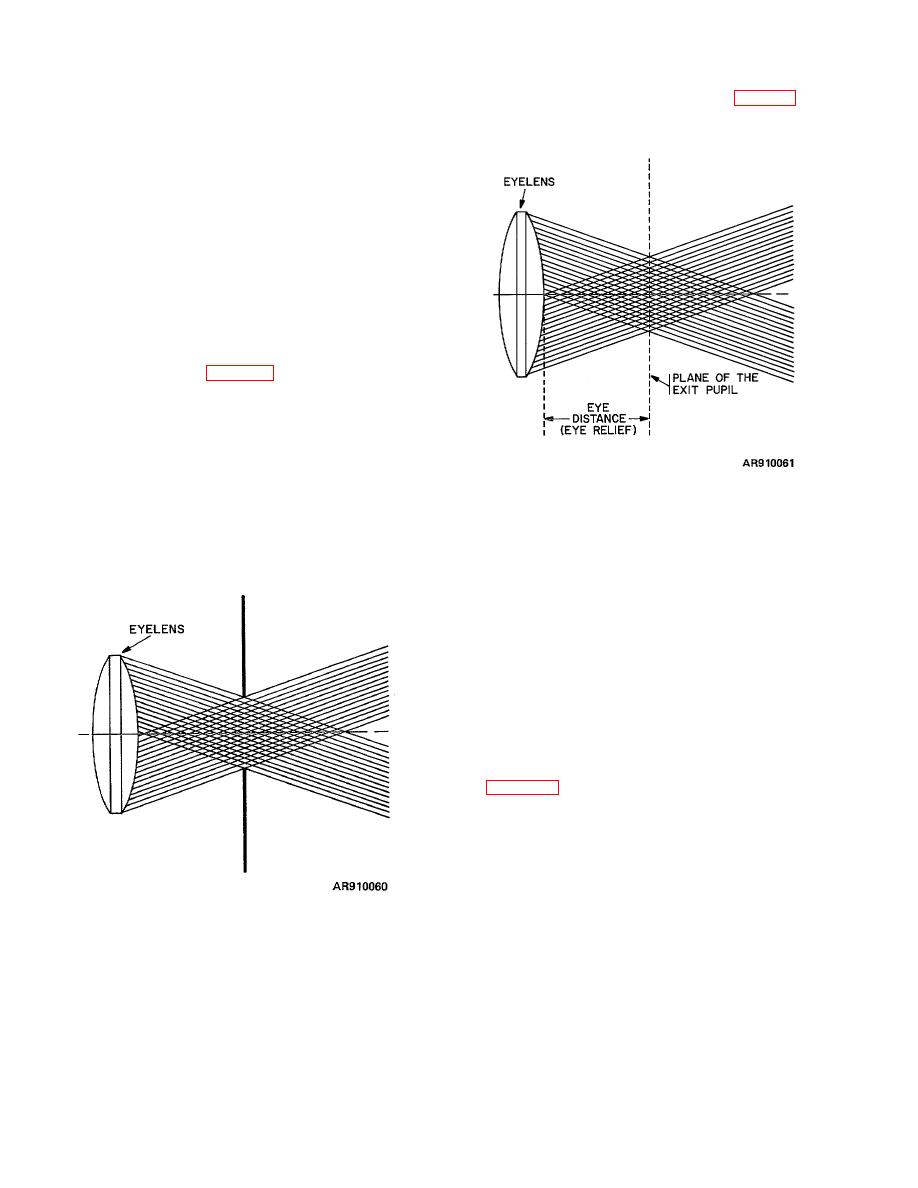 |
|||
|
|
|||
|
|
|||
| ||||||||||
|
|
 TM 9-258
the ratio of focal length to lens diameter of aperture. It is
termed the eye distance or eye relief (fig 2-55). The eye
also known as the speed of a camera lens and is written
must be placed at this distance from a collective
as f/16 (for example) or f/3. 5. At f/16 the lens is being
eyepiece in order to see most effectively through the
used at an aperture (opening) of 1/16 of its focal length
instrument.
and at f/3. 5 the lens is being used at an aperture of 1/3.
5 of its focal length. As the denominator increases, the
focus becomes sharper (lessened aberration) but the
light and brightness of image decrease as the aperture is
smaller. The time of exposure, therefore, must be
lengthened proportionally.
As the denominator
decreases, the lens is said to become faster (wider
aperture or lens opening) and it can be used at faster
shutter speeds (shorter exposure time). If it is desired to
photograph action, a fast lens must be used; otherwise,
the picture will be blurred from the motion.
2-34. Eye Distance or Eye Relief.
a. The exit pupil (fig. 2-54) is the term applied to
the rays of light which emerge from any optical
instrument with a collective or convergent eyepiece and
form the image that is seen by the eye. The exit pupil of
such an instrument can be seen as a brightly illuminated
disk floating in space if the instrument is directed toward
an illuminated area and its eyepiece is held about 15
Figure 2-55. Eye distance.
inches from the eye. The position of the exit pupil can be
fixed on a screen of translucent paper or on a plate of
c. If the eye distance of an instrument is so limited
ground glass. In this manner, the distance of the exit
that the exit pupil cannot enter the eye pupil or if the
pupil from the last glass surface of the eyepiece can be
eyelashes touch the eyelens, observation through the
Figure 2-54. Exit pupil.
measured.
instrument will become tiresome and the instrument
cannot be used most effectively. When the instrument is
to be mounted on a weapon, if the eye distance is not
considerable, recoil, of the gun will make observation
dangerous.
d. In the design of the instrument, the proper
location of the exit pupil must be given most careful
consideration. If it is too far back, the eyepiece will
become too cumbersome in design; if it is placed too
close, the user of the instrument will suffer discomfort
and will be unable to use the instrument to the best
advantage.
Proper eye distance depends on the
purpose for which the instrument is to be used
2-35. Interpupillary Distance.
a. The spacing between the pupils of the eyes
make stereovision possible because each eye views an
object from a slightly different viewpoint. From the fused
image gained from the two viewpoints, the observer
receives the impression of depth. This spacing of the
b. The full field of view of a telescope can be seen
eye pupils varies to a considerable degree in different
only when the pupil of the eye of the observer is at the
individuals and is known as Interpupillary distance. This
same position as the exit pupil. The distance from the
distance is measured in millimeters by the
eyelens to the exit pupil is
interpupillometer M1.
b. In the designing of instruments to be used by
2-41
|
|
Privacy Statement - Press Release - Copyright Information. - Contact Us |